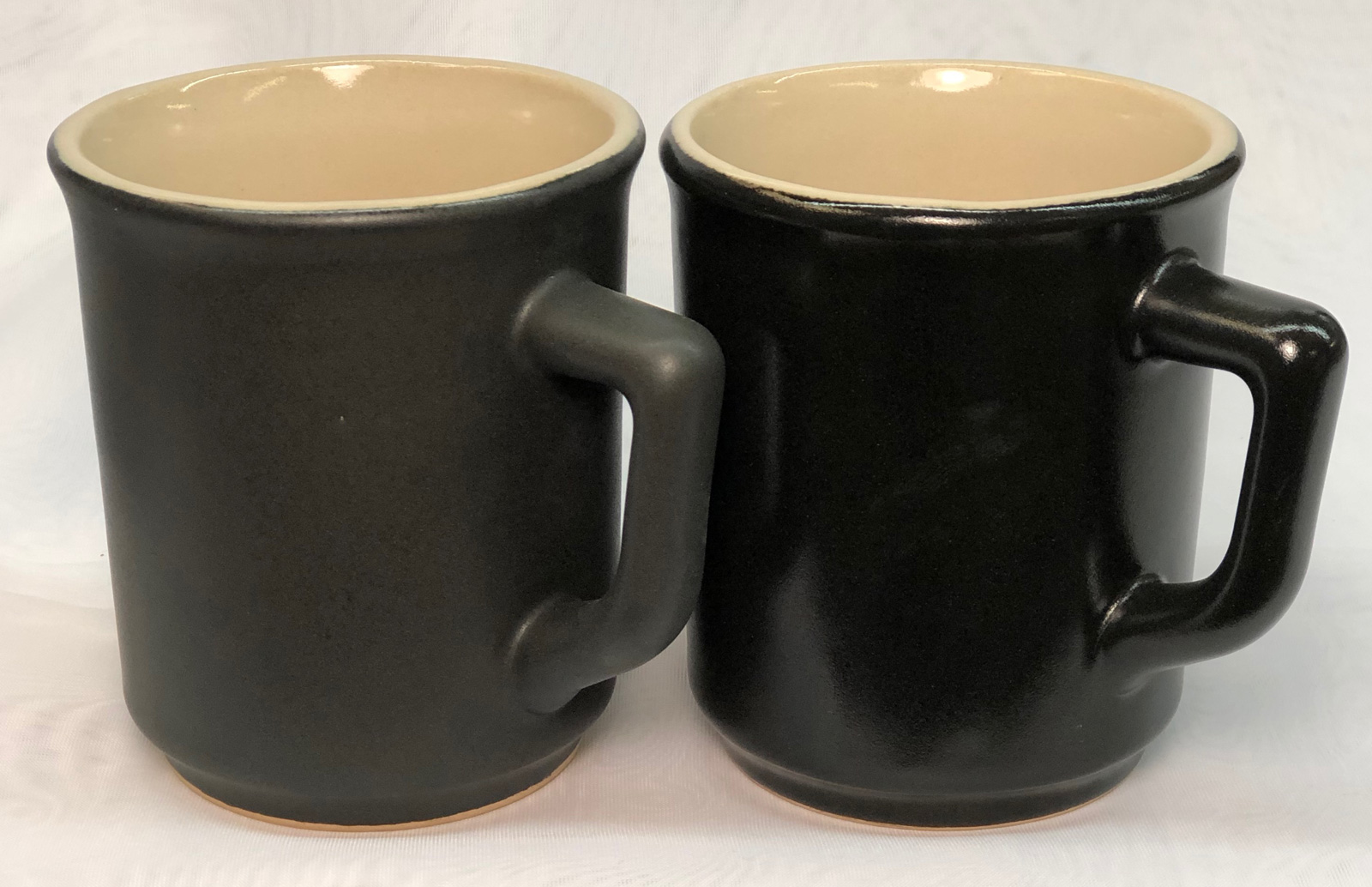Cooling rate drastically affects the appearance of this glaze
This is the G2934Y satin matte glaze recipe with Mason 6600 black stain (6%). The piece on the left was fired using the C6DHSC firing schedule (insight-live.com/glossary/289">drop-and-hold at 2100F then 150F/hr to 1400F). The one on the right was fired using the PLC6DS schedule (drop-and-hold at 2100F then free-fall from there). The slow cooling rate gives the glaze on the left time to crystallize, creating a stony matte (and altering the colour accordingly). My kilns are generally lightly loaded, so free-fall firings drop rapidly, producing the effect on the right. This phenomenon is a characteristic of high MgO glazes (ones having significant dolomite, talc, Ferro frit 3249). To vary, by recipe, the degree of matteness, we also make this glaze using a blend of G2934 base (which fires even more matte on slow-cool) and G2926B glossy (starting with and 80:20 matte:glossy mix). Of course, this type of glaze would not be practical in an industrial shuttle kiln, pieces would fire differently depending upon their placement on the cars.
Pages that reference this post in the Digitalfire Reference Library:
G2934Y - Cone 6 Magnesia Matte Low LOI Version, What Determines a Glaze's Firing Temperature?, A gunmetal glaze I have wanted for decades!, The same glaze fires very differently depending on kiln cooling rate, Two cone 6 black glaze recipes I control and adjust A gloss and a matte based on two reliable base recipes, Matte Glaze, Firing Schedule

This post is one of thousands found in the Digitalfire Reference Database. Most are part of a timeline maintained by Tony Hansen. You can search that timeline on the home page of digitalfire.com.
